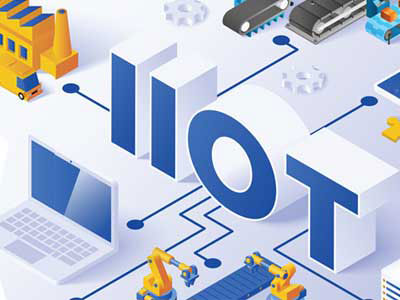How Do IIoT Solutions Facilitate Remote Monitoring And Control Of Industrial Machinery?
Key Takeaway
IIoT solutions enable remote monitoring and control of industrial machinery by connecting devices through various networks like Wi-Fi, cellular, LPWAN, and satellite. These networks transmit data from machines to a central system. The data is then processed and analyzed to provide insights. This allows operators to monitor machine performance in real-time, detect issues, and even control operations remotely. With IIoT, industries can enhance efficiency, reduce downtime, and perform predictive maintenance, ensuring smoother operations and cost savings.
Key Technologies Enabling Remote Monitoring in IIoT
Industrial Internet of Things (IIoT) solutions leverage various advanced technologies to enable remote monitoring and control of industrial machinery. Core technologies include sensors, wireless communication protocols, cloud computing, and data analytics. Sensors gather real-time data from machines, which is then transmitted via wireless protocols such as Wi-Fi, Bluetooth, and Zigbee. This data is stored and processed in the cloud, allowing for remote access and analysis.
Machine learning and artificial intelligence (AI) further enhance these capabilities by providing predictive maintenance insights and optimizing operational efficiency. For new engineers, understanding these key technologies is crucial. They form the foundation of IIoT systems and are essential for developing effective remote monitoring solutions that improve productivity and reduce downtime.

Advantages of Remote Monitoring and Control in Industrial Settings
Remote monitoring and control offer significant benefits in industrial settings. One major advantage is the ability to continuously track machinery performance without needing on-site presence, leading to cost savings and operational efficiency. Early detection of issues through remote monitoring can prevent costly downtime and extend equipment lifespan.
Remote control allows quick adjustments to changing conditions, enhancing flexibility and productivity. Engineers can make real-time decisions based on accurate data, ensuring optimal performance. This capability improves the resilience and efficiency of industrial operations.
Moreover, remote monitoring supports proactive maintenance, identifying problems before they escalate, thus maintaining smooth operations. These benefits make remote monitoring and control essential tools for modern engineering teams focused on improving industrial efficiency and reliability.
You May Like to Read
Implementing IIoT Solutions for Effective Remote Operations
Implementing IIoT solutions for effective remote operations involves several steps. First, identify the specific needs and challenges of the industrial environment, selecting appropriate sensors and communication protocols tailored to machinery requirements. Integrating these components into a cohesive system involves setting up reliable data transmission pathways and ensuring robust cybersecurity to protect sensitive information.
Training personnel on IIoT system use and maintenance is essential. Engineers must be skilled in interpreting data and using remote control functionalities. Regular updates and system evaluations are necessary to adapt to evolving technologies and operational demands.
Effective implementation ensures seamless remote monitoring and control, driving efficiency and innovation in industrial settings. This approach helps newly joined engineers contribute to more efficient and resilient industrial operations, leveraging the full potential of IIoT technologies.
Case Studies: Successful Remote Monitoring Implementations
Examining successful remote monitoring implementations provides valuable insights into IIoT solutions’ benefits and challenges. One example is a manufacturing plant that used IIoT sensors and cloud analytics to monitor its production line, reducing downtime by 20% and increasing productivity by 15%. Continuous monitoring and predictive maintenance helped the plant address issues before they escalated.
Another case is an oil and gas company using remote monitoring for offshore drilling operations. The IIoT system provided real-time data on equipment status and environmental conditions, enabling quick decision-making and reducing equipment failure risks.
These examples highlight IIoT’s transformative impact, showcasing its potential to revolutionize industrial operations by improving efficiency, safety, and productivity. For new engineers, understanding these case studies demonstrates how IIoT can enhance industrial processes.
Overcoming Challenges in Remote Monitoring and Control
While IIoT solutions offer many benefits, challenges in remote monitoring and control must be addressed. Ensuring data security is crucial, requiring robust measures like encryption, secure communication protocols, and regular security audits to prevent unauthorized access and data breaches.
Integrating IIoT systems with existing infrastructure can present compatibility issues, needing careful planning and possibly upgrading older equipment for seamless integration. Engineers must manage these integration challenges effectively.
Reliable data transmission in remote or harsh environments is another concern. Choosing appropriate communication technologies and implementing redundancy measures ensures continuous connectivity and minimizes data loss risks.
Addressing these challenges is essential for successful IIoT deployment, allowing industries to fully benefit from remote monitoring and control, improving efficiency and productivity. Understanding and tackling these issues is vital for newly joined engineers in developing secure and effective IIoT systems.
Conclusion
In conclusion, IIoT solutions play a vital role in facilitating remote monitoring and control of industrial machinery. By leveraging key technologies such as sensors, wireless communication, and cloud computing, these systems provide real-time insights and enhance operational efficiency. The advantages of remote monitoring, including cost savings, increased productivity, and predictive maintenance, make it a valuable tool for modern industries.
Implementing IIoT solutions requires careful planning and addressing challenges like data security and system integration. However, successful case studies demonstrate the transformative impact of these technologies. For new engineers, embracing IIoT and understanding its applications in remote monitoring is essential for driving innovation and efficiency in industrial operations.
